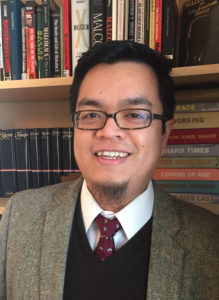student learning
Select an item by clicking its checkbox

Open Space Learning: A Study in Transdisciplinary Pedagogy
Date Reviewed: November 30, -0001
Open-Space Learning (OSL), a “transdisciplinary pedagogy” as practiced at the University of Warwick, challenges assumptions about the boundaries of disciplinary knowledge, the organization of teaching spaces and resources, and the power arrangements that order the roles of teachers and students. This book bears witness to the efficacy of learning in spaces that assume students are engaged in embodied risk-taking, problem-based play, personal responsibility, group collaboration, and open-ended exploration within boundaries and expectations that yield demonstrated competence. The essential prefix for this learning space is “trans-”; it is asserted to be transgressive, transcendent, transitional, trans-rational, transactional, transdisciplinary, and transcultural. OSL draws from the learning theories of Boal, Freire, Vygotsky, Gardner, and Kolb and from the work of Clark and Damasio in neuroscience.
In 2005 the University of Warwick received a grant from the Higher Education Funding Counsel of England to create its center for Creativity and Performance in Teaching and Learning (CAPITAL) in partnership with the Royal Shakespeare Company. Principles of theater pedagogy and performance studies opened new learning possibilities for disciplines not normally associated with embodied performance. The OSL website at the university notes collaborations between CAPITAL and students in business, chemistry, cultural studies, theater studies, philosophy, math, and psychiatry programs. The authors indicate that hundreds of students have been exposed to their learning pedagogies between 2007 and 2011.
Four case studies create the backbone for the book. (1) An undergraduate module “without chairs” for literature majors brought twelve of Shakespeare’s plays to life and assessed student learning in comparison with students in the “with chairs” version of the module. (2) Law students argued cases found in four plays and analyzed their legal implications. (3) The learning gained by participants in the Certificate in Teaching Shakespeare program and the Postgraduate Award in Teaching Shakespeare for Actors is assessed using several measures. (4) Three “practice as research” projects focused on theatrical productions, practical workshops, and performance process for undergraduate students or post-graduates who were teaching Shakespeare. These studies provide descriptions and interpretations of the projects, but they do not offer much detail about the pedagogy’s methods for those without a theater background.
The book publisher provides videos and outlines for specific OSL activities on its website. (I was not successful in getting a number of the links to work.) The OSL site at the University of Warwick provides similar links as well as some others. (This website has not been updated since fall 2013, which also raises questions about the current state of OSL at Warwick.) This book was published as a paperback in 2015. Open Space Learning reads like a report for university or funding organization officials. The authors give significant attention to student assessment of their learning and their performance on various required assignments.
Classroom lectures and seminars, characterized negatively as contexts of “knowledge download,” were the dominant forms of teaching when CAPITAL began. OSL intentionally changes, at least in theory, the relationship between teachers and students, “dethroning” or “uncrowning” the power of the teacher that is reinforced by physical classroom spaces and presentation formats.
I am not satisfied that the authors grappled with the power dynamics that remain present in OSL environments. While a teacher’s authority and expertise are expressed differently in the OSL context, teachers are still structuring the environment in which learning occurs. They are evaluating student work. They determine who passes or fails the modules. While teachers may have been “dethroned” from the traditionally hierarchical ways of exercising authority, they still have power, and perhaps disguised power, in the exploratory OSL context.
The expressions of open space learning reported in this book depend heavily on the plays of Shakespeare. These applications of OSL for religious or theological educators are not immediately obvious, but imaginative teachers, especially those with a performing arts background, will draw inspiration from Open Space Learning and develop possibilities for performing the narrative-based texts from their disciplines in their teaching.
In his “Homage to Joe Sacco,” Edward Said celebrates the author of Palestine and gives us one of the best love letters to comics ever written. He shares his first comic book experience, “Everything about the enticing book of colored pictures, but specially its untidy, sprawling format, the colorful, riotous ...

Teaching for Learning: 101 Intentionally Designed Educational Activities to Put Students on the Path to Success
Date Reviewed: November 30, -0001
The authors of this extremely helpful book open with an observation that is often true: there is a lot of research on how to teach effectively, but “this information tends to be inaccessible to most instructors, as it has been published piecemeal in journals that instructors frequently do not read” (xi). To help remedy this lamentable situation, they have sifted through hundreds of studies in teaching and learning in order to compile a list of educational activities that both work in real world settings and are supported by research. In other words, if you have ever wondered what kinds of teaching actually lead to learning (retention, critical thinking skills, creative application), and you would like to do a better job of varying your pedagogical approaches, then this book will be of interest to you.
Each of the eight chapters focus on a particular kind of teaching and learning format, including lecture, discussion, peer teaching, academic games, reading strategies, writing, graphic organizers, and metacognitive reflection. In clear prose, the authors explain the strengths and drawbacks of each kind of teaching as well as what researchers have found concerning each approach’s effectiveness. For example, lectures work better when instructors keep the lectures short, focused on essentials, and when accompanied with frequent quizzing and guides to effective note-taking. After establishing what works according to research, the authors provide detailed “Intentionally Designed Educational Activities” (IDEAs) to help instructors teach in a way that has been proven to lead to learning. Again, using lecture as an example, some of the suggested activities include guided note-taking, a “find the flaw” exercise, the Socratic seminar, and lecture bingo. The IDEAs, which are delightful and often fun, are cross-referenced with other teaching activities in the book and include helpful “pro-tips” to give additional guidance on implementation. This clear structure makes the book one that can be read cover-to-cover as well as a handy reference volume for specific classroom situations.
Both seasoned and new teachers will get a lot out of this book. New instructors will find the help they need when trying to translate their graduate education into effective teaching. More seasoned teachers will find some tried-and-true methods confirmed but will also encounter new ideas to reinvigorate the classroom. While some of the 101 IDEAs in the book are clearly designed for mathematics or scientific fields, the vast majority are well-suited to humanities and social sciences and will be right at home in religious studies and theological departments at both undergraduate and graduate levels. This book has the potential to greatly improve our day-to-day teaching; our students will be grateful.

Student Motivation and Quality of Life in Higher Education
Date Reviewed: November 30, -0001
Student Motivation and Quality of Life in Higher Education provides readers a constructive overview of the relationship between student motivation and quality of life (QOL) in higher education. In five parts comprising twenty-three chapters, the book presents a wide range of topics and emphases. Part I, “Student perspectives,” offers two student case studies (one undergraduate, one graduate), relating their perspectives and experiences as to influences on personal QOL and learning motivation. These reflections set the stage for Parts II through V.
Part II focuses on “Theoretical perspectives” concerned with matters of learning motivation, QOL and higher education, and applied positive psychology in higher education (chapters 3-5, respectively). Part III attends to “Diversity perspectives on motivation to learn and quality of life,” containing ten chapters encompassing wide-ranging variables such as international student well-being, higher education views among various nations and people groups, health-related and disability impact on QOL and motivation to learn, and effects of optimism and positive orientation on student well-being and learning. Part IV centers on “Promotion of motivation to learn and quality of life in higher education,” comprising six chapters examining and reflecting on improving academic QOL via counseling, resilience in students and teaching resilience skills via a computer-assisted learning website, eLearning support for mental health and perceived self-efficacy, a peer support program for student well-being, curriculum implications resulting from QOL and motivation and professionalism studies, and reclamation of light and liberty and learning related to higher education and student stress. Part V, the final chapter (23) “Synthesis of motivation to learn and quality of life,” presents the editors’ conclusion and a proposed integrative QOL and student motivation model.
Evident strengths of this book include the important (and apparently original) intentional integration of QOL and student motivation, supported with substantive research, reflection, and proposals. Additional strengths of the book include the breadth of the general subject matter and variety of global perspectives. Chapters vary somewhat in terms of research, reflection, and presentation quality (not atypical of edited volumes). One apparent (and somewhat paradoxical) weakness concerns the book’s striving for – and generally achieving – various and useful diversities while also limiting its general ethos to mainly (though not exclusively) medical and health-related students, curricula, and attention. Broadening the research and application to include a wider base of students, disciplines, and curricula (more liberal arts, for instance) would foster greater connectivity within broader academia (undergraduate and graduate) – enhancing the appeal and merit of this already fine tome.
Of particular importance is the dynamic “evolving model of education-related quality of life” (210), summarizing well the overall research findings and important reflective and application possibilities pertaining to student motivation and QOL in higher education. The model avoids reductionistic tendencies owing to its complex, symbiotic, and holistic orientation.
I recommend this book as a constructive resource for higher education institutions (public and private): the book represents a strong effort toward advancing its stated goal of combining “the concepts of motivation and quality of life with the view to enriching the educational sector” (212).
In a time when it is of paramount importance to assert and witness that black lives matter, how do we go about preparing our Islam courses that all too often afford little to no time at all for the societal crises that prevail all around us? This, at least, is ...

